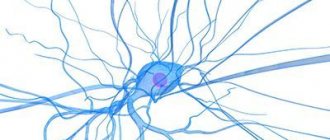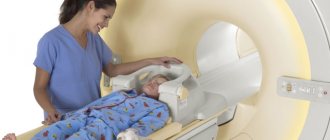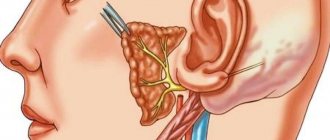Classification of cochlear neuritis of the auditory nerve
Cochlear neuritis is the most common reason why a person's ability to perceive sound is reduced. Auditory nerve disease can affect one side, but sometimes hearing loss affects both sides. According to this, they divide:
- unilateral neuritis;
- bilateral neuritis.
Another classification of the disease concerns the degree of clinical development of cochlear neuritis. It shows how long the nerve dysfunction has been occurring and how severely it is affected. Thus, the following three forms of cochlear neuritis are distinguished:
- Acute cochlear neuritis. The period of the disease at this stage is up to four weeks. If you consult a doctor at this stage of the disease, the probability of complete hearing restoration is 70-90%.
- Subacute sensorineural hearing loss. This stage is diagnosed if the nerve damage lasts from one to three months. Treatment is also used here, the probability of recovery is about 30-70%.
- Chronic sensorineural hearing loss, which lasts for 3 months, is difficult to treat.
There are different types of cochlear neuritis according to the nature and level of damage diagnosed by the doctor. Since the disease is neurosensory in nature, nerve dysfunction can have different origins:
- peripheral cochlear neuritis - causes of impaired sound perception in the inner ear;
- central sensorineural hearing loss - the causes of hearing loss are caused by dysfunction of the corresponding structures in the brain.
According to the degree of development of the disease, four stages of cochlear neuritis are distinguished:
- Mild (I) degree, when the threshold for sound perception is 26-40 dB;
- Moderate (II) degree, the auditory limit here reaches 41-55 dB;
- Moderately severe (III) degree, sound perception threshold 56-70 dB;
- Severe (IV) degree, when the auditory limit is 71-90 dB.
If sound perception is almost completely impaired and the patient is unable to hear any sounds, the doctor diagnoses complete deafness.
According to the likely results of treatment, the nature of the course and symptoms, cochlear neuritis is classified into:
- reversible;
- progressive;
- stable.
In addition, cochlear neuritis is distinguished by the cause of the disease.
- Congenital sensorineural hearing loss, which manifests itself in childhood.
- Acquired cochlear neuritis, the cause of which can be many things. According to this, acquired sensorineural hearing loss is also considered as:
- ischemic;
- radial;
- professional;
- post-traumatic;
- allergic.
If cochlear neuritis occurs before a person learns to speak, then this type of disease is called prelingual. If it appears after, then such neuritis is classified as postlingual.
There can be many reasons for the occurrence of cochlear neuritis, and they differ for congenital and acquired hearing loss.
Classification of the disease
Depending on the concentration of the pathological process, the following types of sensorineural hearing loss are distinguished:
- Unilateral lesion (observed most often).
- Bilateral pathology. It, in turn, can be symmetrical and asymmetrical. With symmetrical damage, both ears begin to perceive sounds equally poorly. With asymmetric hearing loss, hearing impairment has varying degrees of severity.
Depending on the rate of progression of the disease, the following types are distinguished:
- Sudden hearing loss that develops within 12 hours. Symptoms may persist for 14-21 days.
- Acute hearing loss that develops within 3 days. Its maximum duration is 5 weeks.
- Subacute hearing loss, which develops over 7-21 days. Symptoms of the disease persist for 1-3 months.
- Chronic hearing loss, which develops over 1-3 weeks and persists for longer than 3 months. Sometimes hearing cannot be restored.
Causes of congenital cochlear neuritis
Congenital cochlear neuritis, symptoms of which appear from birth, may occur due to genetic abnormalities, illnesses suffered by the mother during pregnancy, or problems during the birth process.
- Hereditary hearing loss can occur due to Waardenburg syndrome, branchiootorenal syndrome, Refsum disease, Alport syndrome, Stickler syndrome.
- Diseases suffered by the mother during pregnancy that can cause cochlear neuritis. Among them are: rubella, meningitis, syphilis, influenza, otitis media, mumps, herpes, ARVI.
- Problems during childbirth can cause damage to the auditory nerve. For example, such a disease can be caused by fetal hypoxia, premature birth, weakness of labor or its incoordination, birth trauma, or a narrow pelvis of the laboring mother.
Causes of acquired cochlear neuritis
Acquired cochlear neuritis in a third of cases is caused by inflammatory and infectious diseases. In addition, damage to the auditory nerve is caused by drugs, impaired blood supply, injury, and allergies.
- Infections and inflammatory processes that can cause cochlear neuritis include: ARVI, influenza, rubella, scarlet fever, mumps, syphilis, typhus and syphilis.
- Toxic effects of drugs, for example, antibiotics, anti-arrhythmia drugs; medications containing heavy metals or phosphorus.
- Trauma to the skull, tumors that can damage the auditory nerve.
- Arterial thrombosis, atherosclerotic plaques that disrupt cerebral circulation and blood supply to the auditory nerve.
- Long-term professional activity associated with constant exposure to noisy environments, loud sounds or vibrations.
- Age-related cochlear neuritis associated exclusively with gradual changes in the auditory nerve.
The main causes of cochleovestibular syndrome
The pathogenesis of the formation of this disorder is associated with damage to the corresponding nerves. This occurs when exposed to many damaging factors. Clinical signs of peripheral cochleovestibular syndrome appear for the following reasons:
- Acute bacterial and viral infections, especially affecting the auditory analyzer and the membranes of the brain. They lead to the development of inflammation, which changes natural metabolic processes, which provokes the formation of sensorimotor disorders.
- Intoxication caused by drug overdose. Most often, vestibular disorders develop when using drugs that have a damaging effect on the auditory analyzer, in particular the cochlea.
- Cardiovascular diseases, such as hypertension, stroke and degenerative changes in the cervical spine, provoke disruption of normal nutrition and blood supply to the central and peripheral organs of balance.
- Injuries to the inner ear, especially those caused by a sharp and pronounced increase in pressure. This happens when diving during diving, as well as due to the gain in altitude during flights.
In most cases, patients experience several manifestations of cochleovestibular syndrome. This is especially noticeable with lesions of the inner ear. A clear clinical picture is given by canalolithiasis - the formation of stones that move through the labyrinth of the auditory analyzer. Patients complain of dizziness when changing the position of the body, which is accompanied by nystagmus - frequent oscillatory movements of the eyeballs. When viewed closely, it looks like darting pupils. The nerve endings of the inner and middle ear are irritated, which provokes similar vestibular disorders. This disorder is rarely recorded, since it resolves on its own due to the voluntary cleansing of the labyrinth from stones. In most cases, nystagmus is associated with lesions of the brainstem and cerebellum. However, indirectly from other clinical signs, this symptom appears infrequently. In 80% of cases, it is induced by dizziness, as the activity of the central nervous system increases. However, if trembling of the eyeball occurs, it is permanent and causes serious inconvenience to the patient.
Symptoms of cochlear neuritis
Both unilateral and bilateral cochlear neuritis are characterized by two main symptoms that are constantly present:
- hearing loss (decreased);
- feeling of constant noise.
These manifestations of the disease may be complemented by other problems with the perception of sound, for example, a shift in the sense of the sound source. There are disorders of the vestibular apparatus, dizziness, vomiting, nausea. These symptoms are more characteristic of chronic cochlear neuritis.
Due to the fact that the disease affects the auditory nerve and the perception of sounds is difficult, children with cochlear neuritis suffer from psycho-emotional problems, moral disorders, and difficulties with speech. There is a decrease in the emotional background, isolation, and isolation from society.
Symptoms of systemic dizziness
Lesions of the inner ear, as well as parts of the brain responsible for maintaining balance, differ in specificity. The cochlea is one of the organs whose diseases can develop a vivid clinical picture. Symptoms of cochleovestibular syndrome include:
- The appearance of nausea and vomiting, which does not bring relief. The cascade of reactions occurring in the central nervous system is similar to the processes accompanying intoxication. In this way, the body tries to get rid of toxic substances.
- Inability to maintain balance. Since cochleovestibular syndrome develops against the background of damage to the inner ear, as well as problems in the functioning of the central and peripheral nervous systems, such a disorder is its classic manifestation.
- Disturbances in the functioning of the auditory analyzer. They are associated with damage to the cochlea. Tinnitus is also diagnosed. In this case, both a decrease in hearing acuity and its complete loss are possible.
- The feeling of objects rotating relative to the patient is a classic symptom of dizziness of various origins. Accompanies all vestibular disorders and provokes increased nausea.
Diagnosis of cochlear neuritis
In order to begin treatment of the disease, it is necessary to conduct a broad diagnosis of this problem. As already mentioned, cochlear neuritis exists in a wide variety of types and types and can be classified and defined into groups. Therefore, the doctor needs to conduct many tests, analyzes and procedures in order to fully describe the disease, identifying all aspects of cochlear neuritis and determining its genesis, causes, symptoms, period of occurrence, etc. This is a meticulous process, difficult at an early stage both if there is unilateral and bilateral cochlear neuritis.
The degree of damage to the auditory nerve is determined using audiometry or acoustic impedance testing. Additionally, the ability of the vestibular apparatus to respond to stimuli and load is studied. To determine the nature of the disease, various tests and analyzes are carried out; separately, using computed tomography, x-rays or magnetic resonance imaging, the vascular system, cranial bones, and human brain are studied.
To clarify the diagnosis and check its truth, manipulations are carried out aimed at detecting other diseases. Thus, the patient can be checked for otitis media, cerumen impaction, and otosclerosis using endoscopy or otoscopy.
After other possible options have been excluded from the diagnostic field, the doctor narrows the search and not only records the disease, but also characterizes it, describing the type, variety, and possible cause that caused it.
Diagnostic tests
Since vestibular-trunk syndrome is a complication of the underlying disease, if it is suspected, a number of studies are carried out. Patients are examined by two doctors at once - an ENT specialist and a neurologist. A thorough history is taken and a series of tests are carried out to assess the severity of the clinical manifestations of coordination disorder. Diagnosis is aimed at identifying the root cause. Examination of the outer ear rarely gives significant results, so magnetic resonance therapy is required, which allows us to exclude the presence of morphological changes in the brain and its membranes. If a patient has a history of cardiovascular disease, hematological tests, ultrasound and electrocardiograms will be required.
Treatment of cochlear neuritis
The goal of treatment for this disease is complete or partial restoration of hearing. If the patient is sick with a chronic form of cochlear neuritis, treatment is prescribed aimed at stabilizing the existing condition and preventing its deterioration. In other cases, cochlear neuritis may respond to various forms of treatment, both in a hospital and in a regular setting.
Drug treatment is used, usually prescribed intravenously. Vasodilator drugs, venotonics, neuroprotectors and disaggregants are indicated for administration over a period of two weeks. Then they move on to another stage of treatment, when the medicine can be taken orally or administered intramuscularly.
If hearing loss was caused by intoxication, first a course of procedures is carried out to remove harmful substances from the body, such as heavy metals, arsenic, phosphorus. After the toxic element is eliminated, treatment is prescribed.
The symptoms of the disease are also relieved, eliminating pain, dizziness, nausea, and vestibular disorders, if any.
In addition to treatment with medications, manipulations are also prescribed. With the wide possibilities of modern ENT medicine, procedures such as electrical stimulation, oxygen barotherapy, electro-, laser-, acupuncture, as well as phonophoresis are successfully used.
This range of treatment options is indicated for those types of disease where there is a possibility of complete or partial restoration of hearing. If the task is such that it is necessary to maintain the patient’s existing health condition, or as an additional therapy, hearing prosthetics may be prescribed.
Hearing aids are indicated not only to make it easier for patients to perceive sounds, but also to restore speech function. Linear, analog, and digital hearing aids are used. In order for the prescribed prosthesis to function correctly, its adjustment and selection must be carried out by a specialized ENT professional.
Surgical intervention, the possibility of which we mentioned earlier, is indicated if cochlear or brainstem implantation is required, or hearing impairment is caused by injury, tumor or neoplasm, the removal of which is necessary. In addition, the operation will be performed on those patients for whom the symptom of dizziness or noise becomes painful.
If the patient has a severe form of cochlear neuritis, then surgery may be aimed at manipulating the cochlea.
Treatment and prevention
Treatment and prevention
Treatment of sensorineural hearing loss begins with placing the patient in an inpatient medical facility. First, the doctor will put the patient on a drip, which will help improve blood circulation and blood supply to the brain. Thus, the measures taken will help reduce swelling and normalize metabolism in nerve tissues. The next step in treating the disease is to administer B vitamins to the patient, which in this case must be consumed in large quantities.
After the patient is hospitalized, he needs to take medications that have a positive effect on the inner ear. Such measures are considered preventive.
Treatment of hearing loss and the necessary medications that the patient should take depend on the causes of the disease and at what stage of development it is.
Often, patients suffering from this disease have electrodes implanted in the auricle, this helps stimulate the ear nerves. With the help of such an operation, hearing can be restored not only to those who have the initial stage of the disease, but also to those whose form of the disease is severe.
It is possible to restore hearing in people who are already practically deaf using cochlear implantation. And in cases where it is too early to perform such an operation, patients use hearing aids.
Prevention of sensorineural hearing loss involves a person’s careful attitude towards their health and hearing in particular. To do this, you must avoid staying in places where the noise level is significantly higher than normal. There is also no need to listen to loud music using headphones or the player's speakers.
There are too many cases of hearing loss among those who regularly visit nightclubs or work in such establishments, since in such places the level of permissible noise standards is significantly exceeded.
If high noise levels are constantly present in your workplace, then you need to use hearing protection, for this you need to wear sound-absorbing headphones. Such preventive measures are indicated for those who work in shooting ranges, construction sites, nightclubs and manufacturing. Otherwise, not only hearing deterioration is possible, but also complications of hearing loss.
Prognosis for cochlear neuritis
The prognosis for the effectiveness of treatment for cochlear neuritis largely depends on the duration and symptoms of the disease. Modern and proven ENT techniques show themselves very well, having proven to be truly effective and efficient solutions to this problem, however, if cochlear neuritis was diagnosed at a late stage, then no medicine can help here. However, in the case when the patient consults a doctor on time, for example, at the stage of acute cochlear neuritis, the probability of recovery and complete restoration of hearing is 50%. Partial hearing restoration is guaranteed for another third of patients.
Chronic cochlear neuritis is practically untreatable; drug and procedural intervention will help little, but the efforts of doctors will be aimed at stabilizing and maintaining the current state of human health. It is important to prevent regression and further damage to the auditory nerve. This is why such patients are prescribed hearing prosthetics: it minimizes the likelihood of further deterioration of the condition, since it significantly facilitates the functioning of the auditory system, preventing it from overstraining.
Doctors repeatedly emphasize the importance of promptly going to the hospital in case of damage to the auditory nerve. Both if cochlear neuritis occurs suddenly, and if it bothers the patient for a certain period of time, it is necessary to go to a specialist. Early diagnosis can save your hearing or prevent it from deteriorating further. Remember that your health is the most important thing, and hearing problems are far from local in nature: damage to the auditory nerve entails disturbances in speech, and therefore in socialization, behavioral sphere, emotional background, mental and moral state.









